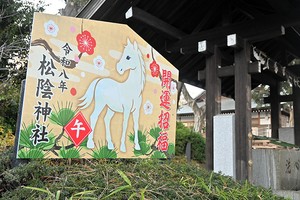November 27, 2024 at 14:12 JST
 The Ministry of Health, Labor and Welfare (Asahi Shimbun file photo)
The Ministry of Health, Labor and Welfare (Asahi Shimbun file photo)
Increased enrollment seems to offer the best way to overcome the annual income wall that plagues the social security system. We hope for continued discussion aimed at getting more part-time workers to enroll in kosei nenkin corporate pension plan and healthcare programs so the nation’s social security system becomes more equitable.
Under the current system, dependent spouses of company employees and civil servants (Category 2 enrollees) are “Category 3 enrollees” who are eligible for basic pension benefits without paying into the system. However, if these people’s working hours or income exceed certain limits, they lose their status as dependents and are obliged to start paying insurance premiums, thereby cutting into their net income.
To get around this, people refrain from working beyond a certain threshold, or income wall, as it is popularly called.
Earlier this month, the labor ministry began discussing ways to remove the wall.
Under the current social security system, Category 2 enrollees are those who (1) work for businesses with 51 or more people on the payroll; (2) work longer than 20 hours per week; and (3) earn more than 88,000 yen per month (or around 1.06 million yen per year).
One idea that has been floated by the ministry is to eliminate (1) and (3), and lump all those who work more than 20 hours a week at any business in Category 2.
In 12 prefectures including Tokyo, where the minimum hourly wage already exceeds 1,016 yen, people who work 20 hours are automatically in the (3) group. Should the minimum wage reach that level in other prefectures as well, the current 88,000-yen/month threshold will no longer mean anything.
Assuming the ministry is anticipating such an outcome and also aiming to get more people to enroll in social security plans, we agree with eliminating any condition that has nothing to do with the actual needs or interests of workers, such as the size of the businesses they work for.
It is possible that people are now more conscious of the “20 hours” stipulation as the threshold--or “the wall”--they don’t want to cross.
Probably in view of such people, the ministry has floated a plan to allow employers the choice of subsidizing their workers’ insurance premiums in full, instead of the usual 50 percent. The plan is worth considering, if the self-help efforts of businesses that need workers will result in increasing the number of pension program enrollees.
The “1.3 million yen wall problem” is also a subject of discussion. This phrase implies that if a person’s total annual income exceeds 1.3 million yen even though they work less than 20 hours a week, the individual ceases to be Category 3 and becomes Category 1, which means they pay into the “kokumin nenkin” national pension plan. And unlike Category 2 people who are enrolled in the “kosei nenkin” corporate pension plan, the financial burden will become greater, even though their benefits won’t increase any more as it would in Category 3.
The Constitutional Democratic Party of Japan has presented a bill to provide benefits that would make up for the net income loss resulting from “crossing the wall.” But even if the labor ministry’s plan increases the number of pension enrollees, roughly how many people will remain unable to become Category 2? And is it appropriate to use public funds to make up for income losses? These questions require careful scrutiny.
According to the labor ministry plan, people who work more than 20 hours a week and join Category 2 anew will be paying a higher insurance premium than before.
The high prices of goods has made many people more conscious of “net income.” The government must thoroughly explain the benefits of enrolling in social security plans, including future increases in pension payouts.
--The Asahi Shimbun, Nov. 27




















A peek through the music industry’s curtain at the producers who harnessed social media to help their idols go global.
A series based on diplomatic documents declassified by Japan’s Foreign Ministry
Here is a collection of first-hand accounts by “hibakusha” atomic bomb survivors.
Cooking experts, chefs and others involved in the field of food introduce their special recipes intertwined with their paths in life.
A series about Japanese-Americans and their memories of World War II